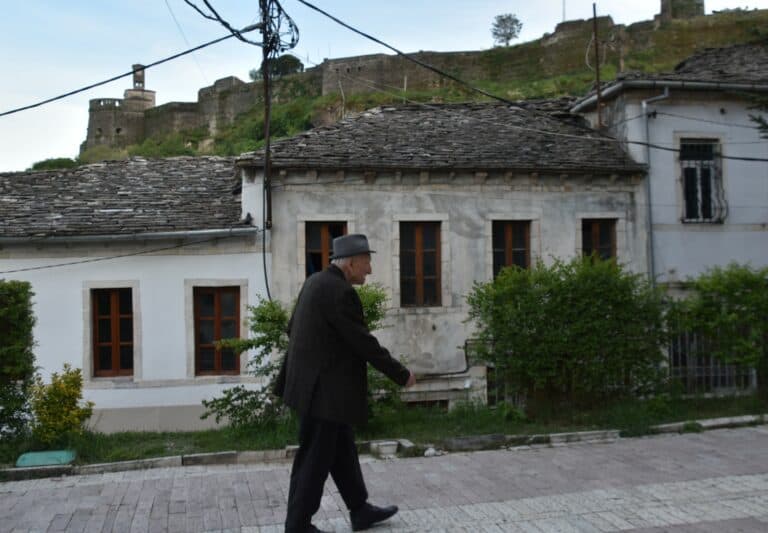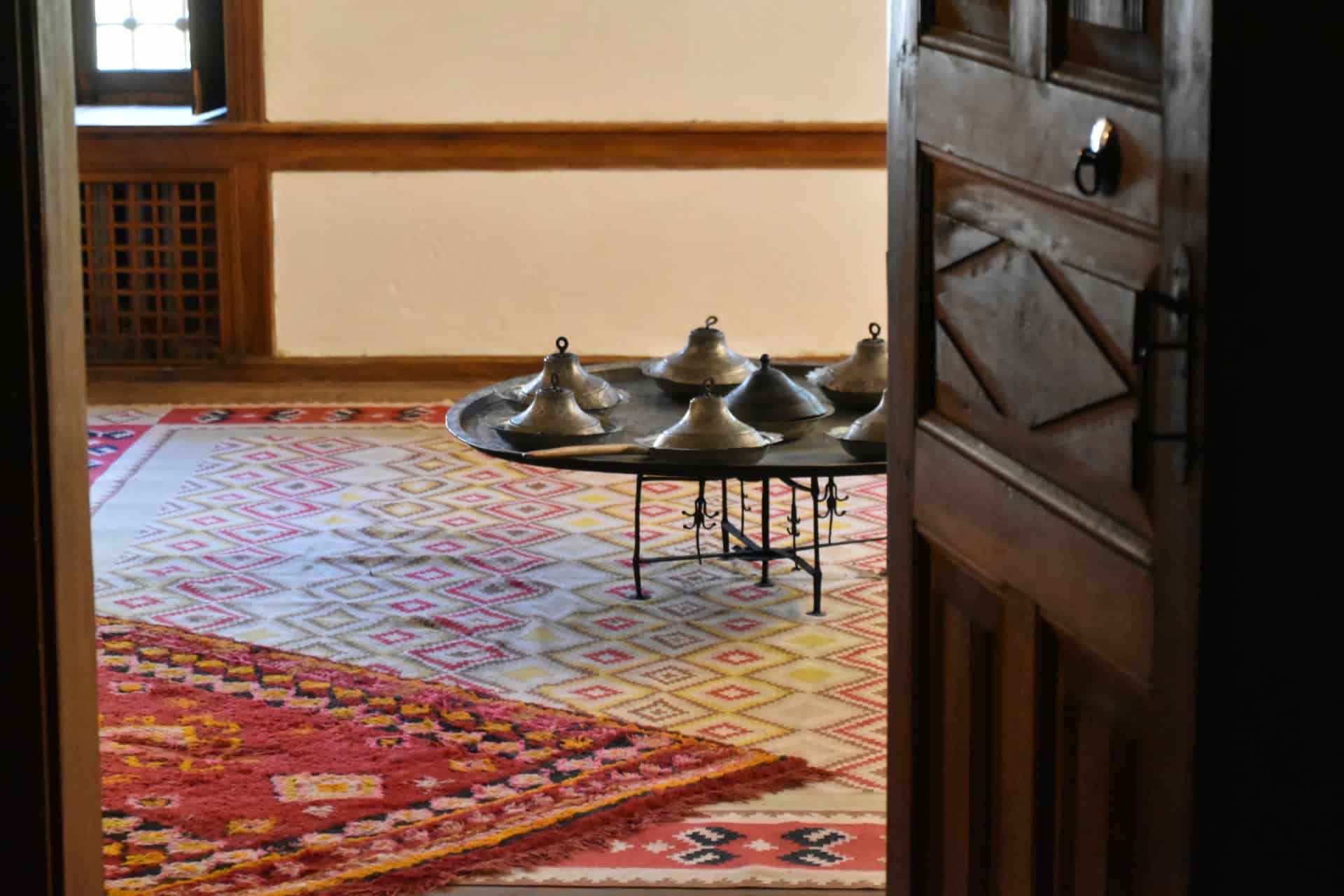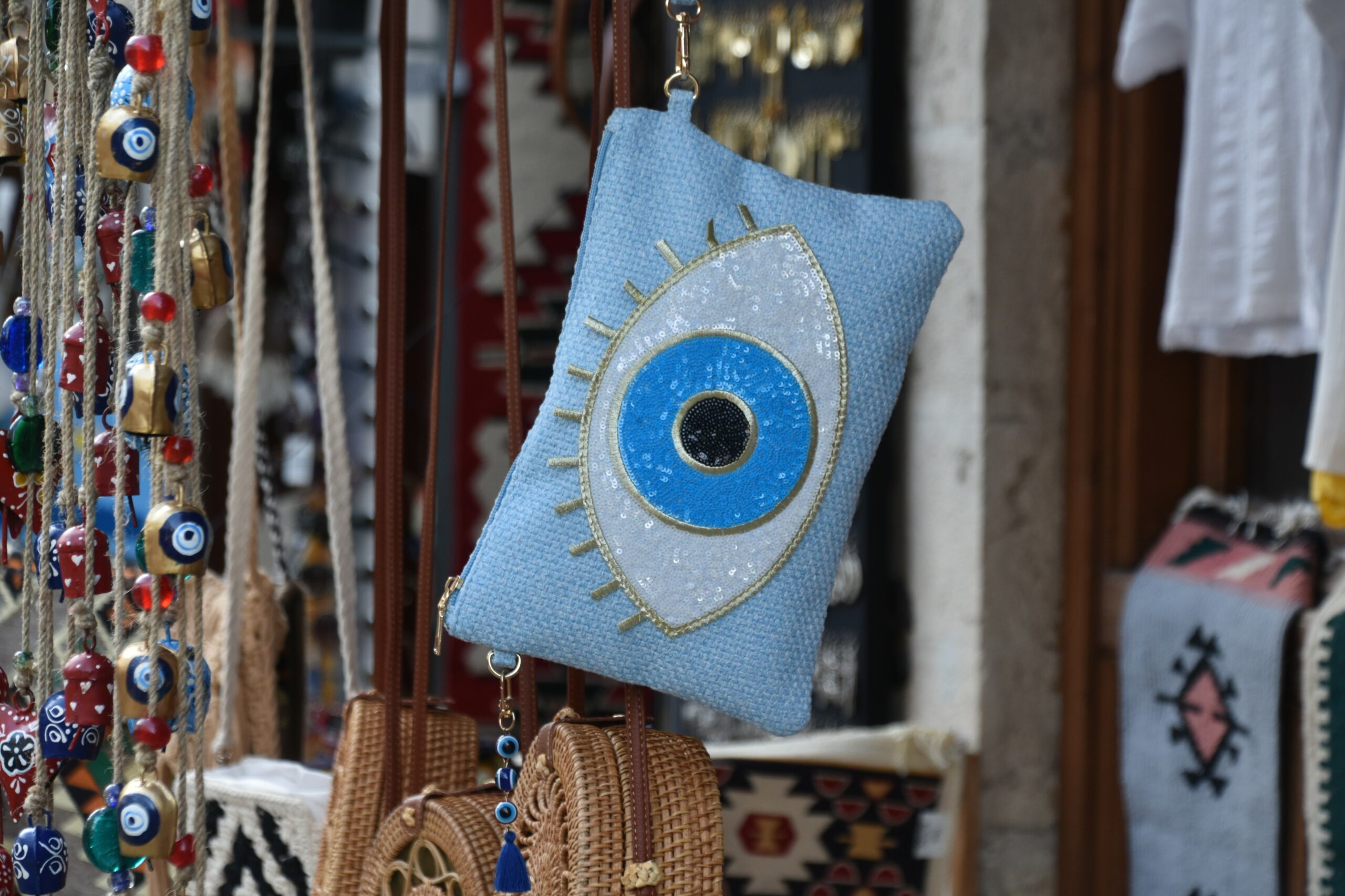Gjirokaster
Gjirokastër, often called the “City of Stone,” is one of Albania’s most enchanting and historically rich towns. Nestled on the slopes of the Drino River valley in southern Albania, this UNESCO World Heritage site is renowned for its unique Ottoman-era architecture, steep cobblestone streets, and imposing fortress that overlooks the city and surrounding mountains. Gjirokastër offers visitors an unforgettable glimpse into Albania’s past, blending cultural heritage, history, and natural beauty in a striking and intimate setting.
The city’s name means “City of Stone,” a fitting title given its characteristic stone houses with distinctive slate roofs that cascade down the hillside. These traditional homes date mainly from the 18th and 19th centuries and are remarkably well preserved. Many feature large wooden balconies, thick stone walls, and charming courtyards, reflecting the architectural style typical of the Ottoman period. Walking through Gjirokastër’s old town feels like stepping back in time, with narrow streets winding between well-maintained historic buildings that convey a strong sense of place and history.
At the heart of Gjirokastër stands the majestic Gjirokastër Fortress, which dominates the skyline. The fortress dates back to the 12th century, though much of its current structure was built or renovated during the Ottoman era. It served as a military stronghold and watchtower over the centuries and now functions as a museum. Inside its walls, visitors can explore ancient cisterns, prison cells, and exhibition halls that display artifacts from the city’s rich history, including weapons, traditional costumes, and photographs. The fortress also offers panoramic views of the city and the Drino valley, making it a must-see landmark.
Gjirokastër is also famous as the birthplace of Albania’s former communist leader, Enver Hoxha, and the well-known writer Ismail Kadare. The house where Kadare was born has been turned into a museum, providing insight into his life and work. Meanwhile, the city’s cultural life is enriched by traditional music and crafts, especially the renowned local silver filigree jewelry and handmade rugs.
Another highlight of Gjirokastër is its vibrant bazaar area, once an important commercial center, where visitors can find local crafts, textiles, and traditional Albanian food. The atmosphere here is lively yet retains an old-world charm, with cafes and small shops lining the narrow streets.
Gjirokastër’s location within a landscape of rolling hills, olive groves, and rugged mountains adds to its appeal. The natural surroundings invite hiking, exploration, and moments of quiet reflection. Nearby villages preserve many traditional customs and ways of life, making this region a fascinating area for cultural tourism.
The city’s architecture and urban design are so distinctive that they earned Gjirokastër a place on the UNESCO World Heritage list in 2005. This recognition highlights the city’s outstanding universal value as a well-preserved example of Ottoman-era architecture and urbanism in the Balkans.
In summary, Gjirokastër is a remarkable blend of history, culture, and nature. Its stone houses and fortress tell stories of centuries past, while its lively bazaars and cultural sites keep tradition alive. Visitors are drawn to its authenticity and the warm hospitality of its people. Whether wandering through its ancient streets, exploring its museums, or simply enjoying the stunning views, Gjirokastër offers a unique and enriching experience that captures the soul of southern Albania.
Ethnographic museum used to be Hoxha’s home
[Apr. 2024] On the second day in Gjirokaster, Albania, we gathered at 8:15 and went to the Ethnographic Museum first. It is very close to the House of Skenduli, a traditional house that we visited…
The only shopping we did in this holiday
[Apr. 2024] In Gjirokaster, an old town in Albania, we stayed at a hotel near the bustling city centre, where shops were lined up like a bazaar. The hotel was called Hotel Argjiro. It seems…
Traditional Coffee Brewing
[Apr. 2024] The last place we visited in Gjirokaster, an old town in Albania, was a shop that demonstrated how to make traditional coffee. A kilim was laid on the ground, and on top of…
The only shopping we did in this holiday
[Apr. 2024] In Gjirokaster, an old town in Albania, we stayed at a hotel near the bustling city centre, where shops were lined up like a bazaar. The hotel was called Hotel Argjiro. It seems…




